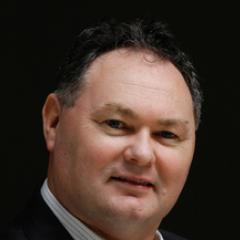Sturm Group - Naevus and melanoma genetics
About
Melanoma is triggered by ultraviolet radiation (UVR) exposure and the risk of development is markedly increased in people with a genetic predisposition to the disease and/or well-defined phenotypic risk factors. These include fair skin, red hair, an inability to tan, and a high total body naevus count (TNC). Early diagnosis is the key to improving the chance of long-term survival. Our long term vision is to develop a surveillance service including genetic risk information and phenotypic risk factors to identify high risk individuals, thus enabling precise monitoring to identify melanoma in its early stages, when treatment is likely to be curative.
The Brisbane Nevus Morphology Study (BNMS) of over 1200 individuals was established to investigate the phenotypic and genotypic risks associated with dermoscopic naevus subtypes and melanoma. We have recently shown that high TNC and MC1R red hair alleles contribute synergistically to increased melanoma risk. In Queensland, people with 20+ naevi (≥5mm diameter) and MC1R red hair genotype have a 25-fold increased melanoma risk, compared to people with 0-4 naevi and MC1R wild type genotype.
Whole exome sequencing (WES) data for 384 melanoma patients has allowed us to initiate germline genomic analysis of patients at high risk of melanoma.
- This database of rare deleterious variant alleles has allowed us to search for known, actionable familial melanoma gene mutations and for candidate genes to analyse overall genetic risk for melanoma.
- We are developing rare variant polygenic risk scores (RVPRS) for melanoma, melanoma by age, and single vs multiple melanoma using this information.
- The melanoma RVPRS and common PRS values will be compared and combined with our published odds ratios for MC1R/TNC risk for melanoma family history and high penetrant carrier status (CDKN2A mutation) into a combined melanoma risk score (CMRS).
This quantitative approach to phenotypic and genotypic personalized risk of melanoma will be used to develop protocols for targeted melanoma screening in high risk individuals and families followed longitudinally with 3D total body photography.
Student projects
- Genetics of human pigmentation traits including comparing individuals of high and low TNC, and looking at genes controlling naevus morphology, freckling and eye colour.
- Cell biology of human pigmentation and naevogenesis, whereby the laboratory is growing primary cultures of human melanocytes to assay function of genes and examine the UV induced tanning response.
- Whole exome sequence and bioinformatic analysis of patients at high risk of melanoma and cell culture of melanocytic lesions.
Grants
We have received funding from the Australian NHMRC as a Centre of Research Excellence for the Study of Naevi. Multiple NHMRC Project grants have funded the BNMS. A Queensland Genomics Health Alliance Demostration Project Grant has provided support for Whole Exome Sequencing of BNMS melanoma patients.
Partners
We are conducting joint projects on naevus and melanoma research with Professor Sancy Lechman and Dr Elizabeth Berry at the Oregon Health & Science University, Oregon, USA and Professors Susana Puig and Josep Malvehy from the University of Barcelona, Spain.

